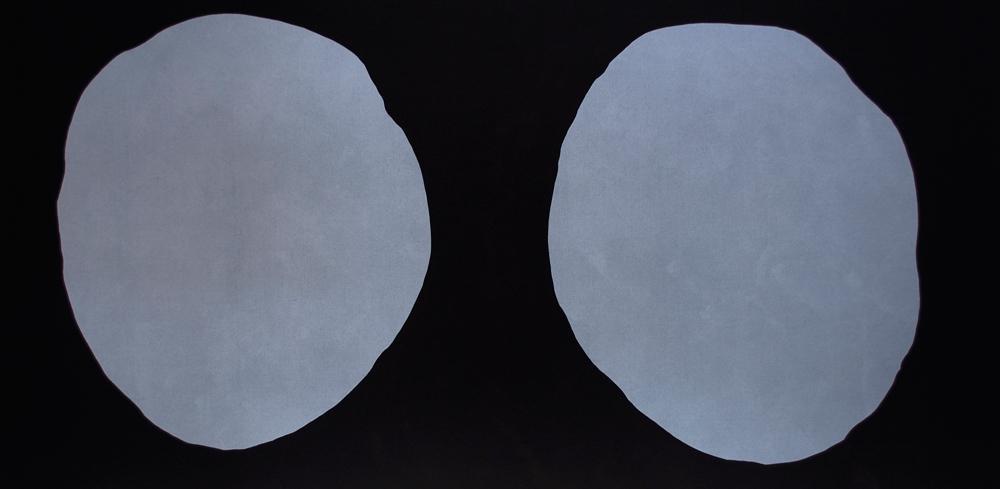There is an ethics of modern art, although it doesn’t value the same things that we normally do. In ordinary daily life, the most important ethic is probably honesty, without which no business could be done; in art, other things matter, one of them being that an artwork should look simple yet be difficult.
Whether an artwork is difficult to make or not is irrelevant—but art must give pleasure, and so it’s better if it doesn’t feel labored, or look like a lot of hard work. The difficulty I’m talking about is also a pleasure, the pleasure of discovering behind the simple surface a host of relationships; the pleasures of allusion, hint, suggestion and implication—in other words, the submerged 90 per cent of the proverbial iceberg, a fitting metaphor for ambitious Canadian art.
The work of Jeff Tutt is a good example. He has an idea and a method, and the work that results is a unified and integral whole in which idea and method can’t be separated out. To explain how this works, I would like to describe how these images could be made. They are not made this way, but in the same manner that water bends light, his canvases give the illusion of a possible method somewhere behind and off to one side. Imagine a great number of overlapping images spread over a flat surface, then trace a contour through these images, and finally remove the images and leave the contour behind. Every bump, wiggle and deviation of the line carries a memory, an echo of the images that once were there, now all condensed into a single gesture.
As I said, this is not how Tutt makes his paintings, but their beauty is in how they reach the same result without going through all the labour required. Or at least it seems that way, and so they have the character of an apparition or piece of magic. Tutt can pull more than a few rabbits out of his hat, and more than a few other things as well, without a lot of fuss.
It’s never wise to confuse the ethics of art with those of life. For example, if we say that a person has integrity, we mean that their behaviour is consistent in all kinds of circumstances, and that we can depend on them to do the right thing. In art, integrity means wholeness—that wherever we knock, there are no hollow spots, but the possibility of change and variation is not ruled out. Some such mix-up, however small, might explain why such a distinguished body of work is not more widely celebrated, although I’m really not sure of the reason.
Tutt’s show is in the studio of his friend, the artist Josh Thorpe, and that’s just fine, because to see one intelligent artist acknowledge another gives hope that there is life in Toronto’s art world after all. Tutt’s work is unusual in this town for the way that it refuses to give in to the demand to explain, defend, theorize or moralize; and neither does it imitate, though it has obvious precursors—Sandra Meigs, for one, although it makes fewer concessions to legibility. It simply is what it is, and as such, it is truly inspiring.
Tutt’s work at 251 Ossington can be viewed Saturdays from 1 to 6 p.m. or by appointment by emailing information@jefftutt.com.









